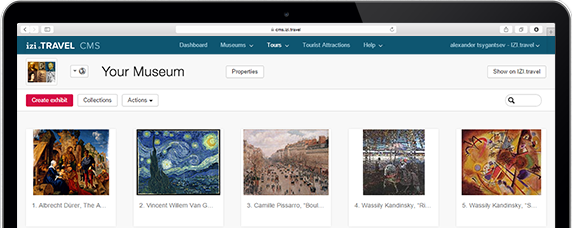Audiotur 5. Archaeological Collections: Room 5
- Ladda ner appen
- iOS
- Android
- Windows Phone
In showcase 21 there are various materials of which the origin is unknown: on the upper shelf, Greek-Italic amphorae and various oil lamps; on the middle shelf loom weights, oil lamps, a guttus and olpai; finally, on the lower level, flint cores, processing chips, flint tools and prehistoric vessels.
In showcase 22 there are finds from the Hellenistic-Roman Age and Late Antiquity from recoveries made in the Treppiedi area in the 60s: a clay statuette, round beak lamps, jugs, bowls in sealed African and amphora with wheel decoration... On the same shelf there is the funerary inscription of Dionysa and glass jugs. On the middle shelf there are other kits with coins, buckles, glasses, treble hooks, clay jugs, glass jugs and a fragmentary bowl in African seal dating back to the 5th century AD. On the lower shelf there is an epigraph, called "Sotèr", from the 6th century AD, a fragment of an amphora and a background of pithos with lead grappas.
In showcase 13 there are exhibits that confirm the continuity of life in Cava Ispica through the classical and Roman-imperial age. On the first shelf, we find the remains of the funerary objects of the catacomb of the Larderia and also a small hoard of coins, perhaps a real "treasure chest" with issues of Constans (347- 348 AC), Gaul Caesar, Constantine the second and Julian (350- 361 AC ). On the lower shelf millstones, hatchets, axes and a pithos with lead grappa are exhibited.
In showcase 24 there are the kits of the Roman necropolis situated in the Ciarciolo locality dating from the 3rd to the 5th century AD: on the upper shelf glass cups, a glass flask, acorn missiles and a glass paste necklace are exhibited; on the middleand bottom shelves cups, jugs and amphorae are displayed.
In showcase 25 some necks of massaliota type amphora dating back to the 4th century B.C. are displayed along with amphorae dating from the 6th to the 7th century A.D.
In showcase 26 there are a series of finds almost all belonging to the Greek-Hellenistic age. The only exhibit belonging to a later phase is a pelvis dish bottom dating back to the late Roman period. Next to this is an amphora painted in red and brown, with belongs to the facies of Licodia Eubea dating back to the 6th century BC. Still on the same shelf is a particular object, or a flute or aulos in bone dating from the 6th- 5th century BC. On the lower shelf, however there is an oinochoe with a trilobate mouth from the 6th century BC, a kylix and a cup both in black paint and dating from the 5th to 4th century BC. Next to these finds we can also see a lamp in a small achromatic ceramic cup, also dating from the 4th century BC.
In showcase 27 there are a large number of finds from different sources. In Santa Maria del Focallo, two miniaturist lekythoi belonging to the 4th-3rd century BC have been found, one with a painted decoration and the other with a black paint with a Greek profile of a woman in white. In the locality of Santa Croce Camerina a lekane of the 4th-3rd century BC was found, that is a toiletry pot used to hold jewellery or make-up. From the locality of Castiglione comes an amphora belonging to the facies of Licodia Eubea dating back to the 6th century BC. In Marina di Ragusa, a particular amphora wall was found, dating back to the Archaic period, decorated with deep Z-shaped incisions.
Outside the showcases there are Roman amphorae like Lamboglia 2, Dressel 2 of III and II d.C. and Greek, Punic and Corinthian amphorae.Next to showcase 27 there are two large millstones in lava stone dating back to the late Roman age, one found in Modica in the Gisira district and the other in Ragusa in the Lusia district.
Turstopp
Recensioner
Ladda ner appen izi.TRAVEL gratis
Skapa dina egna ljud-turer!
Användningen av systemet och den mobila guide-appen är helt gratis

